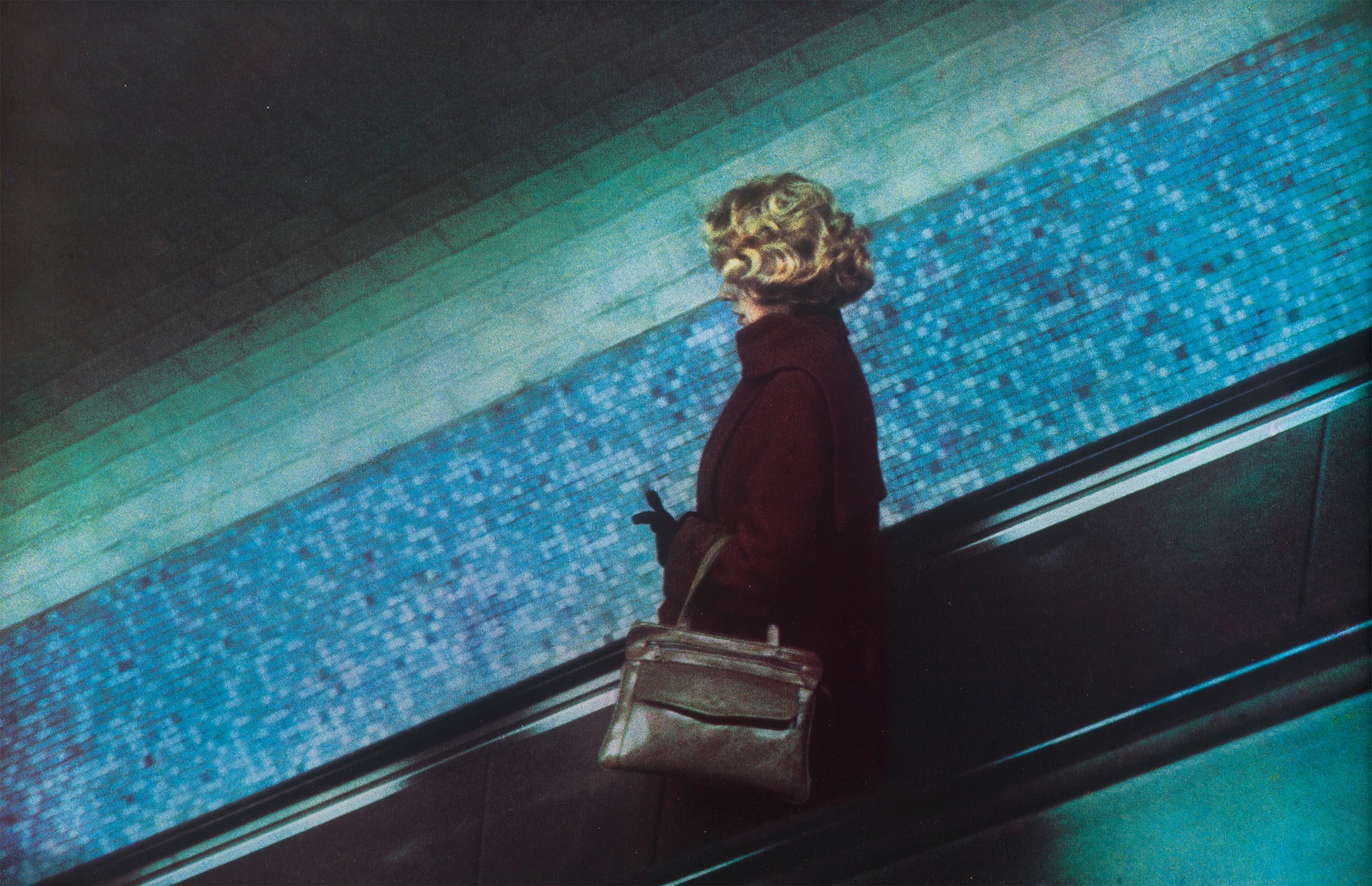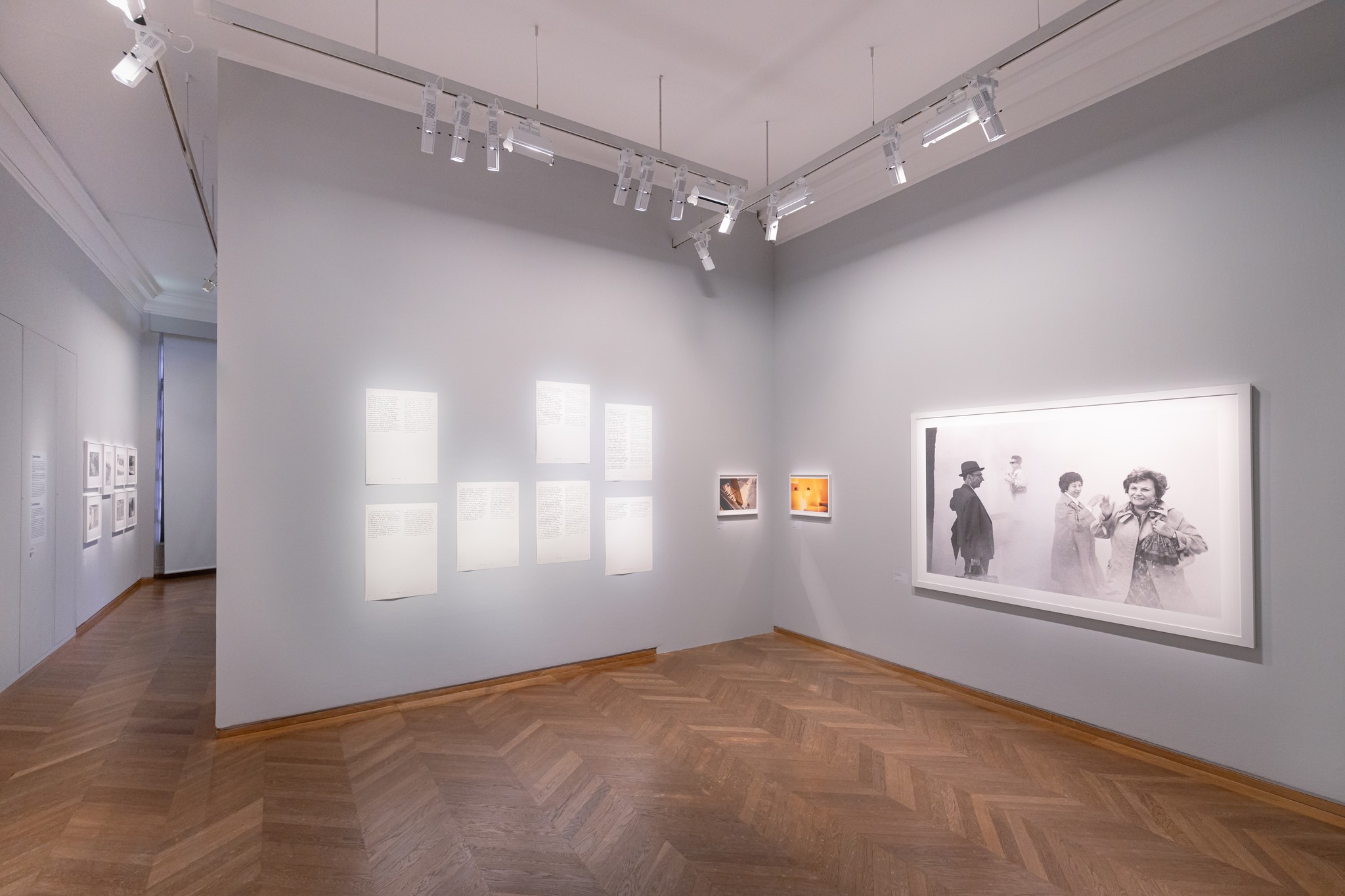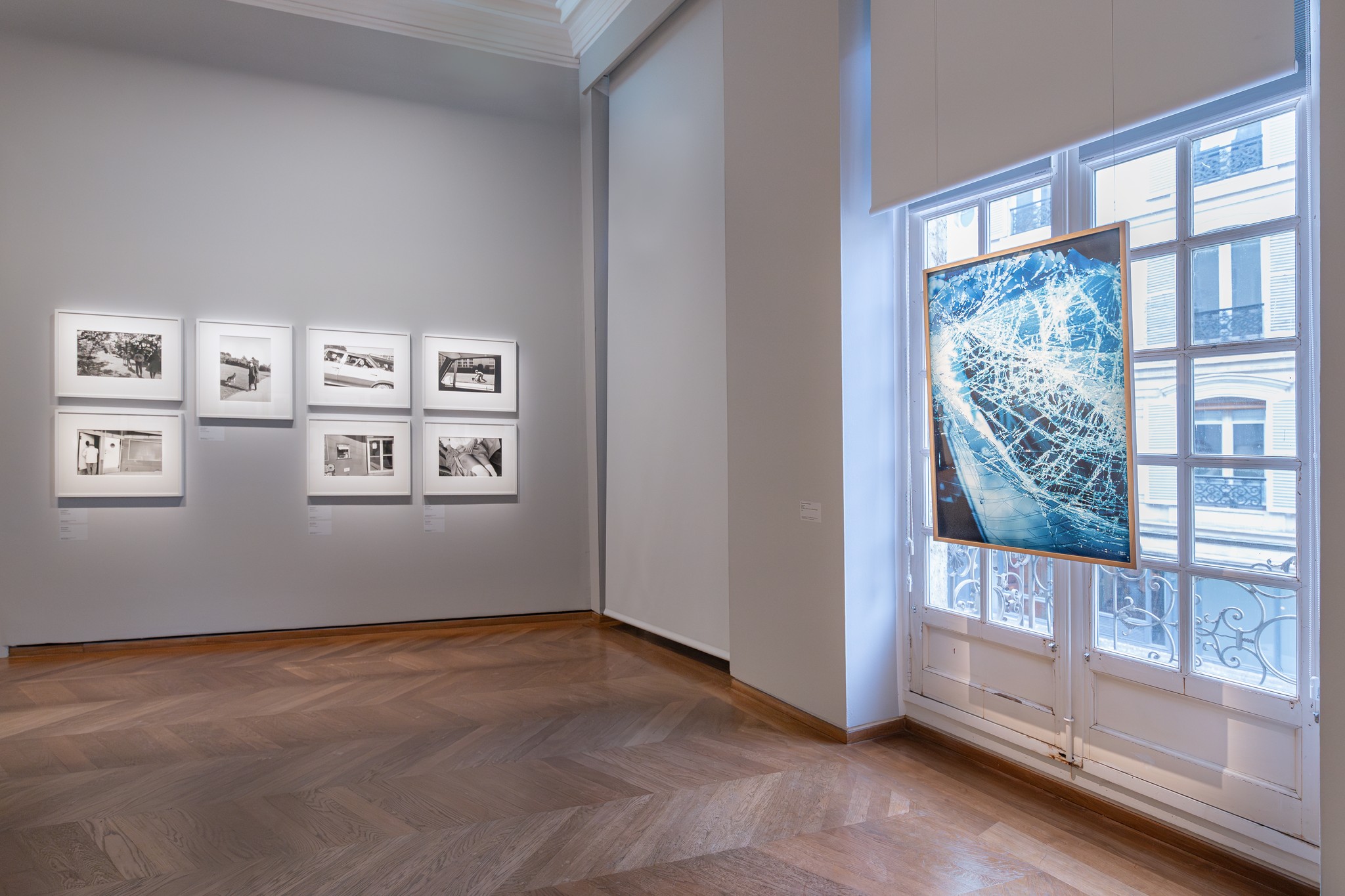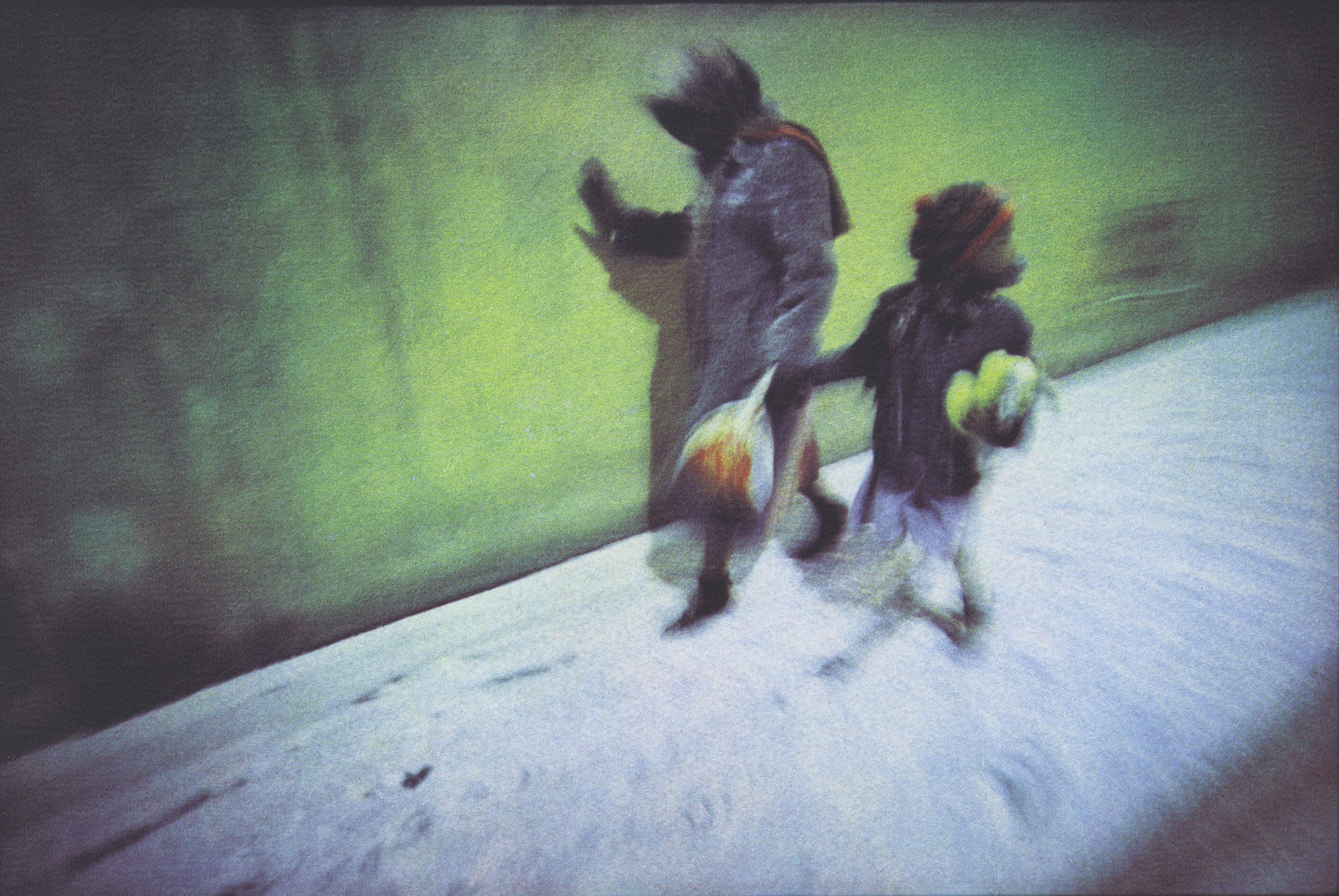Exteriors: Annie Ernaux and Photography
Annie Ernaux’s work has been described as auto-fiction, using her daily life as material. Street photography too is about documenting what is around you, the everyday, and transforming it into an arresting photograph.
Article written by Christopher Niquet

Dolorès Marat, La femme aux gants (Woman with gloves), 1987 Fresson four-colour pigment print MEP Collection, Paris. Acquired in 2001. © Dolorès Marat.
The Exteriors exhibition at Maison Européene de la Photographie is an exploration of the intersection between Annie Ernaux's literary oeuvre and the world of street photography. Ernaux’s writing is an anomaly in the literary French world, her sparse sentences and the banality of her subject matters are in direct opposition to our cultural norms and love of overly flourished paragraphs and novelistic storytelling. As a young reader, she was as important to me as Raymond Carver, the only one in my native tongue looking at the world in a contemporary way. Drawing inspiration from Ernaux's "Journal du Dehors," the show's pairings of Ernaux’s written observations and photographers’ documentations of daily life presents a global perspective on urban life. What I wonder is did the ambitious scope of the endeavour turn monotonous, and did the repetition of its format lessen the power and clarity of the works exhibited?

Annie Ernaux is known for her use of the autobiographical and her exploration of memory, identity, and societal norms. Her literary career started in 1974 and since she has published over twenty novels, all of them exploring periods of her life. A life spent “trying to say something right through literature”. She was awarded the Nobel Prize in Literature in 2022 for an oeuvre whose guiding light has been the refusal of nostalgia. She writes about her own experiences and observations with a clear-eyed and stark style. Her writing eschews sentimentality or romanticisation of the past. She presents an objective and unsentimental view of the world around her and the thoughts that emerge from it. Ernaux focuses on the raw and unadorned truth of her experiences, with no embellishment or idealisation. She dissects and analyses societal changes, her own personal growth, and the passage of time with a clear lens, rather than through a nostalgic filter.

William Klein, Finale de l’élection de Miss France, entourée de Jean-Pierre Foucault et Mme de Fontenay (Final of Miss France contest, surrounded by Jean-Pierre Foucault and Mrs de Fontenay), 2001, from the series ‘PARIS + KLEIN’ C-type print MEP Collection, Paris. Acquired in 2002. © William Klein Estate.
The show emerged out of a curatorial research residency undertaken by the writer and editor Lou Stoppard in 2022. For a month she explored the archives of the museum through the prism of Ernaux’s “Journal du Dehors” (a book published in 1993 and shaped like a diary where the author transcribes scenes of her daily life between 1985 and 1992 in and around the Parisian suburb of Cergy Pontoise where she lives) finding correlating images from the history of French street photography. The original scope of the research evolved and grew to become a show that now includes images from all over the world. The photographs paired with fragments of Ernaux’s writings, though they are all urban scenes, and not the suburbia described in the book. On the walls of the museum, you see Venice, New York, Paris, Tokyo, Moscow, Istanbul… Stoppard seeked wider, looked further, and became more ambitious. Rather than merely looking at a place (the Parisian suburbs) and a time (the mid 80s to the early 90s) and how to illustrate it, she asks the questions: can you see a text? Can you read a photograph? Is Ernaux’s writing actually image making?
The show is divided in sections, rooms are organised under themes (Interior/Exterior, Confrontations, Crossings, Meeting Points…), and each of them is a combination of images and reproduced texts from Ernaux’s novel. The visual language developed is impressive, and as clever and clear as a perfectly laid out photobook. The walls are painted light grey. The photographs, uniformly framed and beautifully lit, are interrupted by sheets of paper bearing Ernaux’s words (on the left the original French, on the right, an English translation) nailed to the walls creating an arresting contrast. Strong blacks and whites, plays on perspectives, frames within frames, endless reflections. The selection of photographs is exceptional, an impressive roaster of 23 of the best lensmen of the past 100 years: Garry Winogrand, Johan Van her Keuken, Jean-Philippe Charbonnier, Daido Moriyama or William Klein amounting to a grand total of 150 photographs.

At times, it can become overwhelming. In the last room, a long wall made out almost entirely of incredible street scenes by Bernard Pierre Wolff bears 27 images taken between the mid 70’s and the mid 80’s primarily in New York and 6 texts. On an adjacent wall, shopping scenes from 50’s France by Janine Niece, not too far present day Chinese street markets views by Yingguang Guo, and always, these sentences by Ernaux are pauses between sections. But the writing is also meant to act as an image within a proliferation of photographs around it. A starting point for your own imagination.

Hiro, Shinjuku Station, Tokyo, 1962. Gelatin silver prints. MEP Collection, Paris. Gift of the Elsa Peretti Foundation in 2008. © The Estate of Y. Hiro Wakabayashi
In one of the galleries, almost halfway through the show, a sentence stopped me: “I am visited by people and their lives like a whore”. It is dated 1988, written by Ernaux and selected by Stoppard. This show takes you around the world and it explores the wide scope of street photography in an excess of locations, times, different socio-economic categories, situations and moments. We visit these places, for as long as we stare at these scenes, and we move to the next one. We gluttonously take in all these lives.

Dolorès Marat, Neige à Paris (Snow in Paris), 1997 Fresson four-colour pigment print MEP Collection, Paris. Acquired in 2006. © Dolorès Marat.
28 Jan - 26 May 2024
The MEP
5/7 rue de Fourcy
75004 Paris, France
Christopher Niquet is a French writer and editor based in Paris. He is the founder and editor in chief of Study magazine and the fashion and arts editor of Holiday magazine.



